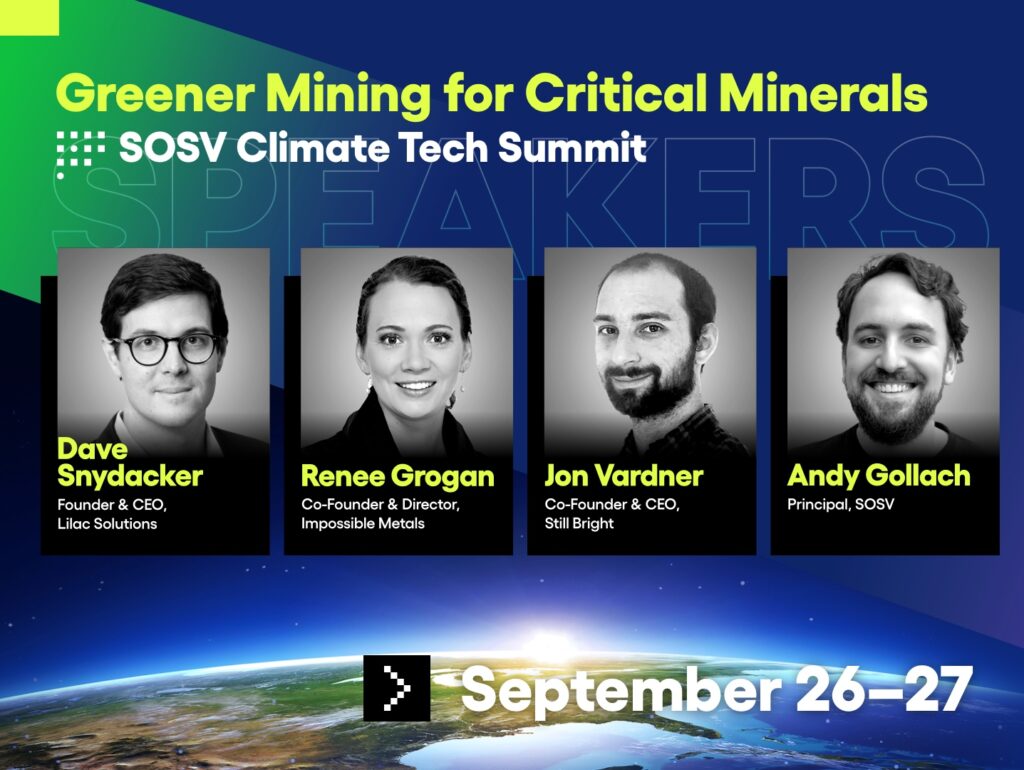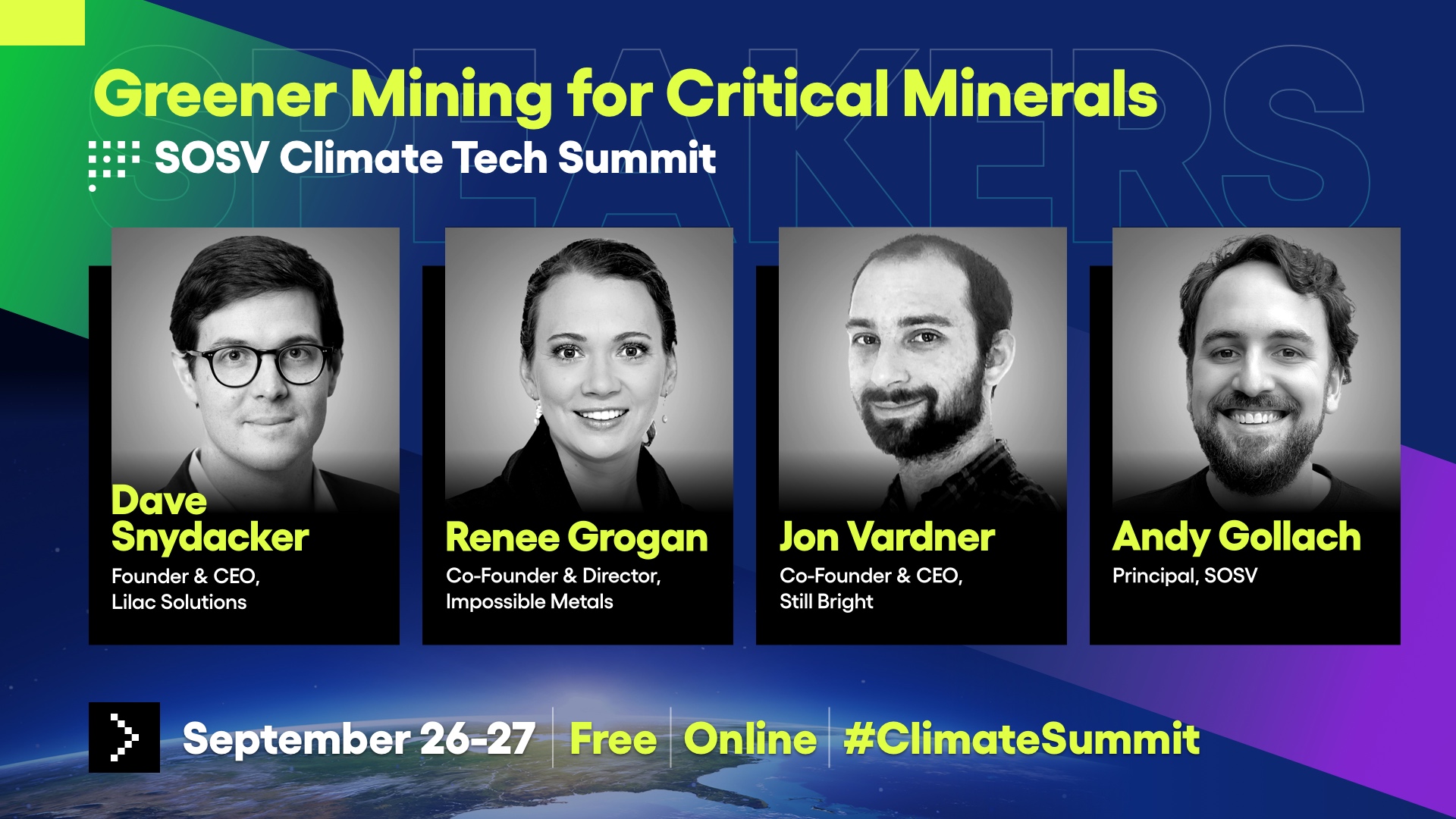
The world faces a mineral shortage that could derail current efforts to arrest climate change. Energy transition minerals—lithium, nickel, cobalt, graphite, and copper, in particular—are key materials in electric vehicles (EVs), battery systems, solar panels, and other climate technologies. A Tesla Model S, for instance, uses 63 kg of lithium in its battery packs and a mile of copper wiring—about 82 kg—to power all the electronics. The market for these minerals doubled in five years, reaching USD $320 billion in 2022 according to the International Energy Association (IEA). Can supply catch demand, which is projected to increase 350% by 2030?
To hear from the experts on that question, we hosted a panel of mining and mineral processing entrepreneurs at the SOSV Climate Tech Summit (Sept 26-27 / free & virtual),
The mineral supply chain has three key problems that innovation might solve: geography, geopolitics, and pollution. Geography matters because mineral deposits and processing capacity are not distributed equally. In 2022, for instance, three-quarters of the world’s cobalt came from the Democratic Republic of Congo. However, China processed 74% of all cobalt and dominated processing for almost all the energy transition minerals.
That concentration in China raises security concerns. The U.S. and Europe don’t want to depend on China for minerals essential to transportation and electrical grids. Nor do they want to swap dependence on fossil fuel regimes (e.g., Saudi Arabia) for dependence on mineral regimes. While reshoring and “friend-shoring” mineral production is possible, it’s also controversial. Most people don’t want mines in their backyard given the industry’s environmental record.
At the Summit, we met innovators who aim to expand mineral supply, reduce the carbon and environmental footprint of mining, and insulate the supply chain from geopolitics.
Dave Snydacker is CEO and founder of Oakland, CA-based Lilac Solutions, developer of an ion exchange technology to extract lithium from brine (natural saltwater pools). Compared to mining outfits that perform this extraction using massive evaporation ponds, Lilac reports that its demo facility has extracted lithium using 1000x less land and 10x less water with a recovery rate of 80% (double the average, they say). Lilac has raised over $200M in funding and grants from backers that include the U.S. Department of Energy, Lowercarbon Capital, T. Rowe Price, Breakthrough Energy Ventures, PRIME Impact Fund, SK Inc. materials, BMW i Ventures, Presidio Ventures, and others.
Jon Vardner is CEO & Co-Founder of Still Bright, which is developing an electrochemical process to refine copper from ore. Unlike typical refining methods that require toxic chemicals and high temperatures, Still Bright’s process runs on renewable energy and performs at ambient temperature and pressure. A graduate of HAX, SOSV’s hard-tech program, Still Bright believes it can extract 1,000 tons of copper per day (enough for 100,000 Model S builds) and aims to revive U.S. domestic production, both to secure supplies and reduce shipping emissions.
Renee Grogan is co-founder and board member at Impossible Metals, a public benefit corporation that wants to collect essential battery metals from the seabed without harming ecosystems (a bold aspiration). The plan is to use autonomous underwater vehicles (AUVs) and a bacterial processing technology that leave minimal trace. Founded in 2020 and based in Pasadena, CA, Impossible Metals has raised over $10M in funding from investors including Justin Hamilton (founder of Clutterbot), Chalet Capital, and former executives of Arm, a British semiconductor and software maker.
Andy Gollach, Principal at SOSV and HAX, moderated the discussion.
Can we extract and process enough minerals for a timely energy transition? And can we do it while minimizing the impacts on glacial islands, sea floors, rainforests, and other delicate ecosystems where these materials are found?
Find out by watching the full discussion below—and catch all the Summit sessions here.
The Speakers
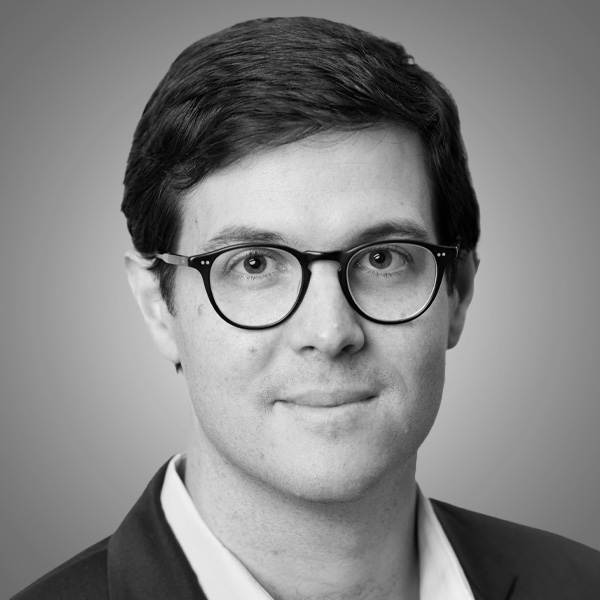
Dave Snydacker
Dave Snydacker is the founder and CEO of Lilac Solutions, a lithium extraction company based in Oakland, California. He holds a PhD in materials engineering from Northwestern University, where his research focused on lithium-ion cathode materials and solid-state lithium metal batteries, and a BA in chemistry from Wesleyan University. He consulted for several startup companies developing new battery materials and manufacturing processes prior to founding Lilac in 2016. Dave lives in San Francisco with his wife Stephanie and children Mason, Isaac, and Cora.
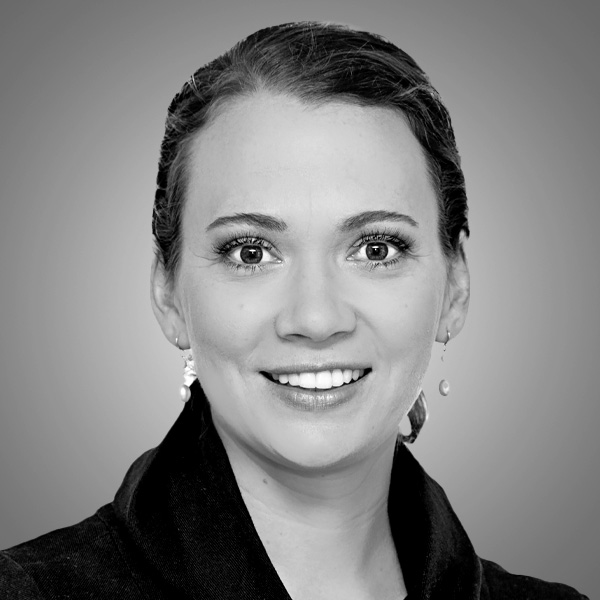
Renee Grogan
Renee Grogan is a Co-Founder of Impossible Metals, and previously served as the Chief Sustainability Officer. She is a sustainability expert with nearly 20 years’ industry experience in permitting and approvals, regulatory compliance, stakeholder engagement, strategy, risk, feasibility and due diligence. Her experience includes working in Australia and the Pacific, the United States, Africa, Europe and Areas Beyond National Jurisdiction. Renee has fulfilled senior sustainability positions with companies including Nautilus Minerals, Newcrest Mining Limited, Gold Fields Limited and Thiess Mining.
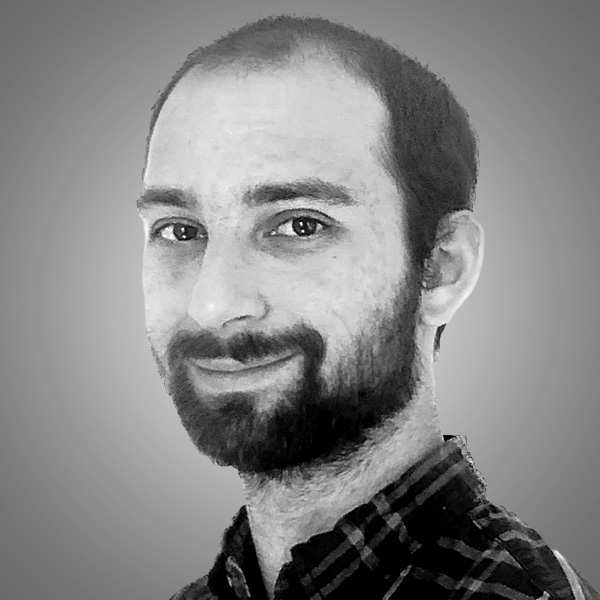
Jon Vardner
Jon Vardner is the CEO and Co-Founder of Still Bright. Jon completed his Ph.D. in chemical engineering at Columbia University where he was an NSF Graduate Research Fellow. He continued his postdoctoral studies at Columbia to develop and co-invent Still Bright’s copper production process.

Andy Gollach
Andy Gollach is a Principal on the team at SOSV’s HAX where he leads investment operations and focuses on innovation in energy and heavy industry. Prior to joining SOSV Andy spent nearly a decade on large capital projects in the O&G and CCU industries all over the world. He was the site lead on LanzaTech’s First-of-a-Kind commercial unit in China, where the facility went from a greenfield site to on-spec product in 18 months. Andy earned an MBA from Carnegie Mellon and during that time focused on innovation and entrepreneurship in the energy sector, launching his own climate tech venture and also interning at ARPA-E where he helped develop an early thesis around maritime decarbonization. Andy also holds a BS in Chemical Engineering from Michigan Technological University.
